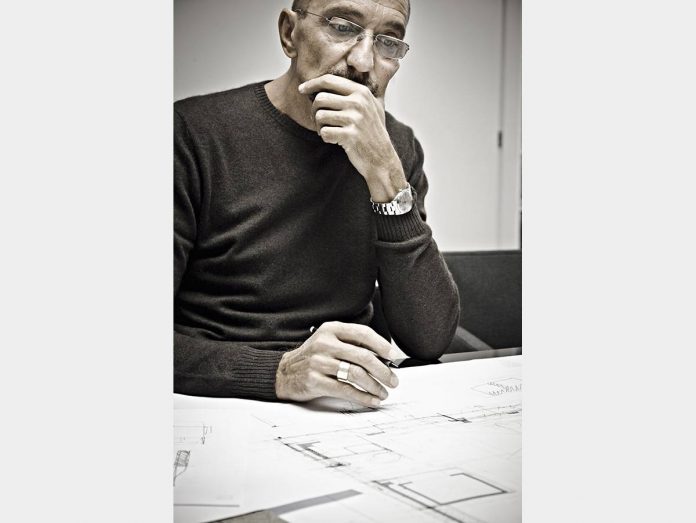Very briefly: the distinctive traits of your style?
Well, I would say a form of rationality that is somehow a characteristic trait of mine; a rigorous originality in design; and a personal taste that some may define bourgeois but which I prefer to call “level-headed.”
Is there a method you rely on for your creations?
I go by a pragmatic method: project, aesthetics, production, market. Aesthetics comes first, and is the starting point of any project, which, if possible, should be the outcome of ongoing and long-lasting relations with corporate clients. In this way, a project naturally becomes a work in progress. The bottom line, though, is that we are talking about shared intuitions. The project must then be applicable – and what I mean by this is that it must be applicable, reproducible, for the company for which that project was originally conceived. The implementation of that project, in addition, must not entail additional works that could end up burdening the product or penalising it at a commercial level. And the, of course, there is the market: who is the product for, where can it be applied?
You are one of the featured guests at the Salone del Mobile with different brands. now, how do you reconcile these various clients of yours?
We always try to avoid working with too many companies at the same, and make sure that designs don’t overlap. The problem is that many companies have nowadays become very versatile and cover just about the entire gamut of furniture types. But above all, I try to work with entities with which I can build a long-term partnership – because to get to know a company and come up with the style that best suits it takes time, application and dedication.
So you put a lot of focus onthe human side of yourwork…
The quality of the work is also defined by the relationship you succeed in developing. As I simply love the work I do, I consider myself lucky, and as such I try to strengthen the profession’s good image. I therefore prefer, even at the cost of being unpleasant, to select clients according to reciprocal esteem and compatibility. For this reason, I’m not particularly tied to the specific product I have designed but rather to the people, to the sensations, to the anecdotes that have emerged during the rapport and that I particularly cherish.
Do you feel the economic crisis is affecting the made in italy?
With respect to a crisis that through hard work and time will ultimately end, what worries me more is how certain productions have adapted themselves to a style that could lead to an irreversible change in what is considered the traditional quality and taste related with Italian-made products. As a consequence of a sense of insecurity or a closer observation of market trends, furniture companies have been adapting their products to a taste that does not correspond to their original sensitiveness. The risk is that the international market will change its conception of what we really are – of our manufacturing system that has always relied on recognisable quality, refinement and originality.
So what is the outlook?
Italy draws a range of different skills and cultures that positively contaminate each other – this blend is the true strength of the so-called Made in Italy product. I firmly believe, the Made in Italy products is the outcome of Italy’s outstanding manufacturing system combined with quality and sense of aesthetics. The way things look – aesthetics – has always been a key concern for Italian manufacturers, becoming the hallmark of Italy’s products in international markets. Now, with regard to these markets and compared to other manufacturers, we are at a disadvantage because we are costlier and more vulnerable, but we are more skilled. I believe we must not change our ability to process sensations and stimulies no matter where they come from, and insist on our ability to transform whatever comes in our way into quality industrial products where the artisanal touch continues to be strong. This is, after all, our real strength.







